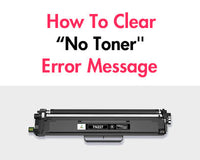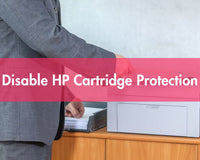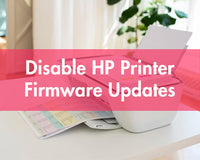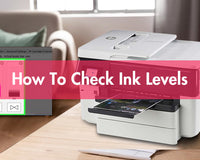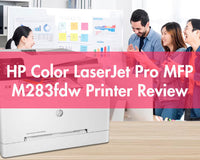3D printing technology has grown in popularity in recent years, transforming from a niche industrial tool to a household necessity for hobbyists, educators, and professionals. As with any technology, it’s important to understand the financial investment required before diving in. The cost of a 3D printer can vary greatly depending on a number of factors, including the type of printer, its features, and its intended use. In this blog, we’ll explore how much a 3D printer costs.
1. Types of 3D Printers
Understanding the different types of 3D printers is essential to understanding their costs. Each type of printer is based on different technologies, which have a big impact on their price.
1.1. Fused Deposition Modeling (FDM) Printers
Fused Deposition Modeling (FDM) printers, also known as Fused Filament Fabrication (FFF) printers, are the most common type of 3D printers found in both hobbyist and professional settings. They work by extruding molten plastic filament through a heated nozzle, layer by layer, to build the final object.
FDM printers are generally the most affordable, with prices ranging from $200 to $2,000. Entry-level models can be purchased for as little as $200 to $500, while more advanced units with larger build volumes and enhanced features can cost up to $2,000.
1.2. Stereolithography (SLA) Printers
Stereolithography (SLA) printers utilize a laser to cure liquid resin into solid layers. This technology is known for its high precision and smooth surface finish, making it popular for applications that require detailed and accurate prints.
SLA printers are typically more expensive than FDM printers, with prices ranging from $500 to $5,000. Entry-level SLA models start around $500 to $1,500, while professional-grade printers with advanced features can cost upwards of $5,000.
1.3. Digital Light Processing (DLP) Printers
Digital Light Processing (DLP) printers are similar to SLA printers but use a digital light projector to cure resin rather than a laser. This method allows for faster printing speeds and often provides a higher resolution.
DLP printers usually fall within the same price range as SLA printers, from about $500 to $5,000. Entry-level DLP models start around $500, while high-end options can approach or exceed $5,000.
1.4. Selective Laser Sintering (SLS) Printers
Selective Laser Sintering (SLS) printers use a laser to sinter powdered material, typically nylon, into solid structures. This technology is often employed in industrial and professional environments due to its ability to produce robust and functional parts.
SLS printers are among the most expensive 3D printers, with prices generally starting at around $10,000 and can exceed $100,000 for high-end models. Due to their industrial-grade capabilities and extensive material compatibility, SLS printers command a premium price.
2. Factors Affecting 3D Printer Costs
Beyond the type of 3D printer, several factors influence the overall cost. Understanding these factors can help you make a more informed purchasing decision.
Print Volume and Build Size
The print volume, or the maximum size of the object a printer can create, directly impacts its cost. Larger build sizes typically require more advanced hardware and materials, leading to higher prices. For example, a desktop 3D printer with a build volume of 200 x 200 x 200 mm might cost $500, while a larger printer with a build volume of 500 x 500 x 500 mm can cost $2,000 or more.
Print Resolution and Precision
Print resolution, measured in microns, refers to the level of detail a printer can achieve. Higher resolution printers produce finer details and smoother surfaces but come with a higher price tag. Entry-level FDM printers might have a resolution of 100 microns, while high-end SLA or DLP printers can achieve resolutions as fine as 25 microns, significantly affecting their cost.
Material Compatibility
Different 3D printers are compatible with various materials, including plastics, resins, and metals. FDM printers typically use PLA, ABS, or PETG filaments, while SLA and DLP printers use liquid resins. Printers that support a wider range of materials or specialty materials (like metal powders) often come at a higher price. For instance, a 3D printer that can handle both standard and exotic materials might cost more than one limited to basic filaments.
Printer Features and Add-Ons
Additional features and add-ons can also influence a printer's cost. Features like heated print beds, auto-leveling systems, dual extrusion capabilities, and enclosed build chambers add to the price. While basic models may lack these advanced features, higher-end printers often include them to improve print quality and user experience.
Brand and Manufacturer
The brand and manufacturer of a 3D printer can significantly impact its price. Established brands with a reputation for reliability and support often charge a premium. These brands typically offer better customer service, warranties, and community support, which can justify their higher costs. On the other hand, lesser-known brands or DIY kits might be more affordable but could come with fewer assurances regarding quality and support.
3. Entry-Level 3D Printers
For those just starting with 3D printing, entry-level models provide an accessible introduction without breaking the bank.
- Price Range: Entry-level 3D printers generally cost between $200 and $500. These models are designed to be affordable while offering essential features for beginners.
- Typical Features: Entry-level printers usually come with basic specifications, such as a smaller build volume, lower print resolution, and fewer advanced features. Common features include a manual bed leveling system and single extrusion capability. Despite their simplicity, these printers are suitable for a wide range of basic projects and experiments.
- Recommended Models: Popular entry-level models include the Creality Ender 3, Anycubic i3 Mega, and Prusa Mini. These printers are well-regarded for their affordability, ease of use, and robust community support. They offer a good balance of performance and cost, making them ideal for hobbyists and newcomers.
4. Mid-Range 3D Printers
For users seeking enhanced capabilities and features, mid-range 3D printers offer a step up from entry-level models.
- Price Range: Mid-range 3D printers typically range from $500 to $2,000. These models strike a balance between affordability and advanced features.
- Enhanced Features: Mid-range printers often include improved print resolution, larger build volumes, and additional features like auto-leveling, heated beds, and better material compatibility. These enhancements provide better print quality and more versatility for various applications.
- Recommended Models: Notable mid-range models include the Prusa i3 MK3S+, Creality CR-10, and Artillery Sidewinder X1. These printers offer advanced features and larger build volumes while remaining relatively affordable. They are suitable for more demanding projects and are favored by both enthusiasts and professionals.
5. High-End 3D Printers
High-end 3D printers are designed for professional use and offer the most advanced features and capabilities.
- Price Range: High-end 3D printers generally start around $2,000 and can exceed $100,000, depending on their specifications and intended use.
- Advanced Features and Capabilities: These printers feature top-tier print resolutions, extensive material compatibility, and advanced functionalities such as dual or multi-material printing, large build volumes, and industrial-grade components. They are capable of producing highly detailed and durable parts, suitable for professional prototyping and production.
- Recommended Models: Examples of high-end 3D printers include the Ultimaker S5, Formlabs Form 3L, and the Stratasys F170. These models are known for their superior build quality, precision, and support for a wide range of materials, making them ideal for industrial and professional applications.
6. Additional Costs to Consider
When budgeting for a 3D printer, it's essential to consider additional costs beyond the initial purchase price.
Maintenance and Repairs
Routine maintenance and occasional repairs can add to the overall cost of owning a 3D printer. Maintenance tasks include cleaning the print head, checking for worn parts, and ensuring proper calibration. While entry-level printers may have lower maintenance costs, high-end models may require more specialized service.
Consumables and Materials
The cost of consumables, such as filament or resin, varies depending on the type and quality. Standard PLA filament costs around $20 to $30 per kilogram, while specialty filaments and resins can be significantly more expensive. For example, high-performance filaments like carbon fiber composites can cost $100 or more per kilogram.
Software and Licensing
While many 3D printers come with basic software for model slicing and printer control, advanced features or professional-grade software may require additional licensing fees. Software costs can range from free open-source options to several hundred dollars for professional-grade applications.
7. Cost vs. Value: Is It Worth the Investment?
Evaluating the cost of a 3D printer involves weighing the initial investment against the potential benefits and value it offers.
Benefits of Owning a 3D Printer
Owning a 3D printer can provide numerous benefits, including the ability to create custom parts, prototypes, and unique designs. For hobbyists, it offers a creative outlet and the satisfaction of making tangible objects. For businesses, it can streamline prototyping processes, reduce manufacturing costs, and facilitate rapid iteration.
Potential for Cost Savings
In the long run, a 3D printer can lead to cost savings by reducing the need for outsourced prototyping or custom parts. For frequent users, the ability to print replacement parts or unique components in-house can offset the initial investment over time.
Conclusion
The cost of a 3D printer can vary widely depending on its type, features, and intended use. From entry-level models to high-end industrial machines, there are options to suit almost any budget. By understanding the different factors that influence pricing, including print volume, resolution, and material compatibility, you can make an informed decision that fits your needs and budget.
